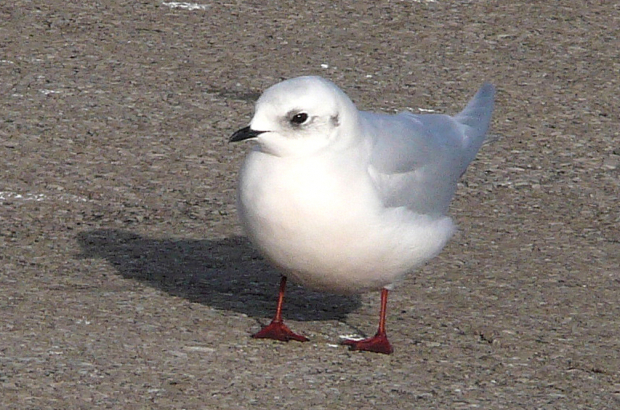- Daily & Weekly newsletters
- Buy & download The Bulletin
- Comment on our articles
Arctic gull appears in Belgium for the first time
A type of gull native to the Arctic has made its first-ever appearance in Belgium during the last few weeks, exciting bird watchers and drawing tourists to the coast for a glimpse of the unusual bird.
The rhodostethia rosea, or Ross’s gull, has been spotted between Dunkirk and Nieuwpoort, far from its native home in the High Arctic (which includes regions such as Siberia, Greenland and Alaska).
Its presence is so exceptional that birdwatchers from all over Belgium and elsewhere in Europe are travelling great distances to catch a glimpse.
“A bird like this one, I will only see once in my life,” Karl Gilbert, an amateur photographer who travelled from Ciney in Namur province, told RTBF. “It comes from very far away. That's why I came here."
Daniele Occhiato, wildlife photographer and ornithologist, came all the way from Italy to see the bird, also known as a roseate gull.
“I’m very happy to have come from Florence to see it,” Occhiato said. “I couldn't miss this opportunity to see this bird at least once in my life. I am very happy, because I could observe and photograph it well during two days.”
The bird is thought to have been first spotted by a fisherman in Nieuwpoort on 1 December, who alerted a photographer to the presence of a long-tailed gull that was flying back and forth along the pier.
The photographer identified the species at home and realised what an extraordinary discovery it was. Several hundred amateur and professional photographers soon flocked to the Belgian coast.
Another Ross's gull was spotted in the port of Zeebrugge in December, which has since disappeared, while the other one seems to have taken up residence in Nieuwpoort since 12 December.
The gull is likely here by accident. In winter, it usually migrates to the Bering Strait between Russia and Alaska. Its presence in Western Europe is extremely rare. Because of its very young age (the one still here is less than a year old), it is possible it took the wrong course, or followed a group of pygmy gulls with which it shares some similarities.
Vincent Legrand, wildlife photographer and ornithologist, thinks the gull might have ended up in Belgium as a result of a storm.
“There was bad weather at the end of November,” Legrand said. “There was a sort of corridor that affected two Ross's gulls, because there was a bird in Nieuwpoort and another one in Zeebrugge. They arrived a day apart. They certainly travelled the same route, and were affected by the strong northern storms.”
During its first year, the gull’s long pointed wings have a black “W” pattern and a wedge-shaped tail typical of the species. As an adult, the bird has a delicate pinkish tinge to its breeding plumage.
“With her small size, she is really beautiful,” Legrand said. “In fact, she has a lot of eyelashes around her eyes to protect her from bad weather and strong winds. Like other species that live in the Arctic, birds have protective eyelashes. These serve to protect them naturally from the freezing cold and thus prevent their eyes from freezing. This is a species I'm particularly fond of.”
The bird isn’t shy and can be approached without much difficulty as it regularly lands on the pier railing to have a snack.
Ross’s gull is one of the least known larids in the world. Its first nesting sites were only discovered at the beginning of the 20th century in Siberia, and new areas are still being discovered today.



















